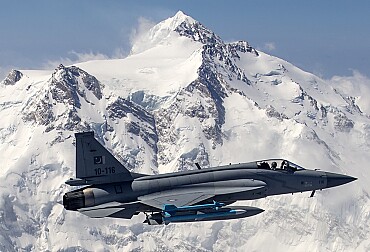B-1 Bomber crash investigation reveals crew mistakes and cultural flaws
Ellsworth Air Force Base, South Dakota – A recent report from the Air Force Global Strike Command has revealed significant lapses in crew performance and organizational culture as key contributors to the decangle of approach during landing, and adherence to established protocols.

The scathing report, signed by Col. Erick Lord, the president of the accident investigation board, criticized the 34th Bomb Squadron for inadequate supervision and the 28th Operations Support Squadron for poor communication regarding airfield and weather conditions. These deficiencies, the report indicated, reflect deeper cultural and leadership issues within the units.
Key findings
The investigation detailed a litany of failures that led to the crash on January 4, including:
- Airspeed and Angle Mismanagement: The crew failed to properly manage the bomber's airspeed and angle of approach during landing.
- Poor Weather Conditions: Deteriorating weather, including dense fog and rapidly shifting winds, compounded the challenges faced by the crew.
- Lack of Discipline and Communication: There was a notable absence of effective resource management and communication within the squadron.
- Decaying Airmanship Skills: The report highlighted an organizational culture that tolerated deteriorating airmanship skills, contributing to the mishap.
The four-member crew ejected from the aircraft, with two sustaining injuries that were treated and released. The $451 million bomber, part of the 28th Bomb Wing, was completely destroyed by fire after skidding 5,000 feet across the runway.
Sequence of events
On the day of the crash, two B-1 bombers undertook a routine training flight. Initially calm winds and clear conditions deteriorated into dense fog, forcing the bombers to cut their training short. While the first bomber landed safely, the doomed aircraft faced low visibility and unexpected wind shifts. Despite attempts to reduce airspeed and maintain the correct approach angle, the pilot's delayed throttle adjustments resulted in the bomber dropping below its intended glide path and becoming "thrust deficient."
In the critical moments before the crash, the instructor pilot's calls to "climb" went unheeded until it was too late. The bomber hit the ground just 100 feet short of the runway, leading to a catastrophic loss of control.
Cultural and leadership issues
The report identified a culture of noncompliance and widespread deviation from established procedures as underlying causes. The mishap was not an isolated incident but rather indicative of systemic issues within the squadron. Col. Lord emphasized that many failures were recurrent, pointing to a broader problem of complacency and ineffective supervision.
Aftermath and fleet impact
In response to the crash, Ellsworth Air Force Base halted B-1 operations and closed its runway for a month. During this period, some B-1s were relocated to Dyess Air Force Base in Texas, where they participated in strikes against Iran-linked targets in the Middle East.
The loss of the B-1 further strained an already dwindling fleet, now numbering just 44 bombers. The B-1 fleet has been heavily utilized in recent conflicts, leading to significant maintenance challenges. In an effort to manage resources better, the Air Force retired 17 of the oldest B-1s in 2021, aiming to sustain the remaining aircraft until the B-21 Raider becomes operational in the 2030s.
Conclusion
The investigation into the B-1 bomber crash at Ellsworth Air Force Base underscores the critical need for rigorous adherence to protocols and robust leadership within the Air Force. Addressing these issues is essential to prevent future mishaps and ensure the effective operation of the remaining B-1 fleet until newer aircraft can be deployed. The Air Force Global Strike Command has committed to taking appropriate corrective actions to rectify the highlighted deficiencies.









